Literacy Spot #31: 10 Pre-Writing Activities for Under 5s
When you actually think about the amount of control required to hold a pencil and direct it in the manner required to form letters, it is easy to see why activities that strengthen and train the muscles in the hand and fingers are so important for young children. While many of the activities below may first appear as regular play, they are actually important ‘work’ in the life of a child, and regular opportunities to engage in these activities (and others like them) are an essential first step in the process of learning to write.
1. Play with some plasticene, clay or playdough. Read more about ways working with dough can strengthen small fingers here.
2. Take Gill at Moving Smart’s advice and head out to the playground to hang around (literally!) on the monkey bars. In her post, Gill provides fantastic information about why this is so important to the process of learning to write.
3. Improve hand eye coordination while getting crafty by sewing buttons.
4. Or threading mobiles.
5. Get out the scissors for some snipping practice.
6. Head out into the garden and shovel! Or try pouring, scooping, pinching and spooning which all require fine motor control. Of course, if you are stuck indoors a tub of rice and an assortment of cups, bowls, scoops and spoons will serve exactly the same purpose.
7. Involve your child in age appropriate everyday tasks such as pouring drinks or spraying with a spray bottle when cleaning windows or dusting surfaces.
8. Cook with your child – activities such as slicing, stirring, whisking, peeling, mashing, kneading, grating, squeezing juice, crushing with a garlic press and pounding with a mortar and pestle all develop the muscles of the fingers and hands.
9. Completing jigsaw puzzles is great for developing a range of thinking skills as well as fine motor skills.
10. Building with blocks, Duplo and Lego all require precision in fine motor control and hand-eye co-ordination.
What are your favourite activities for strengthening fingers and developing fine motor control?

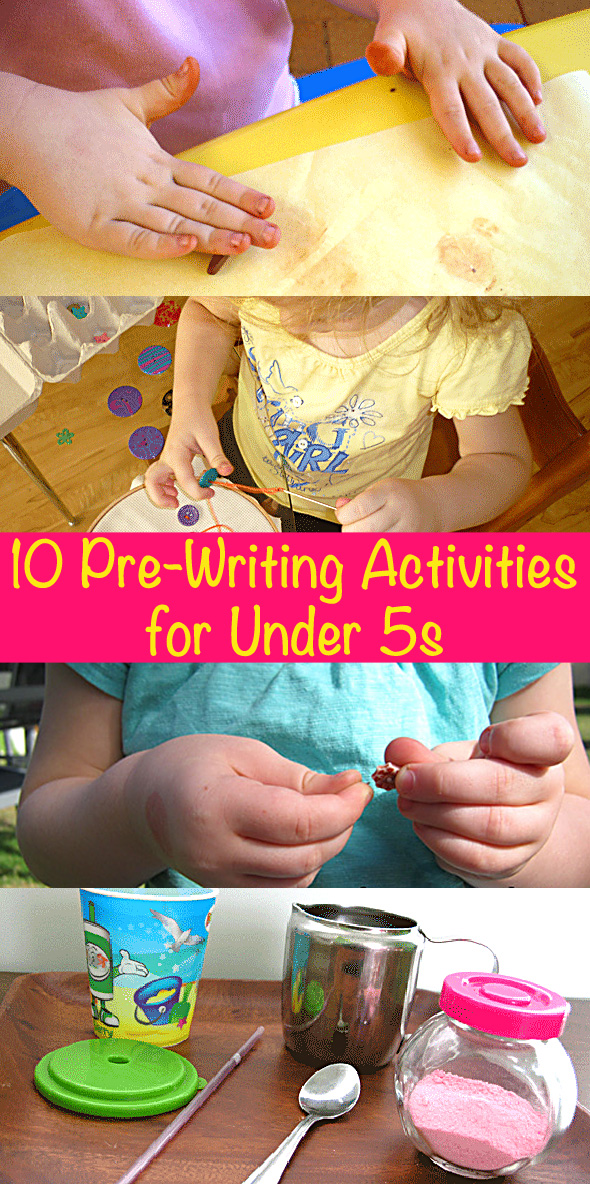
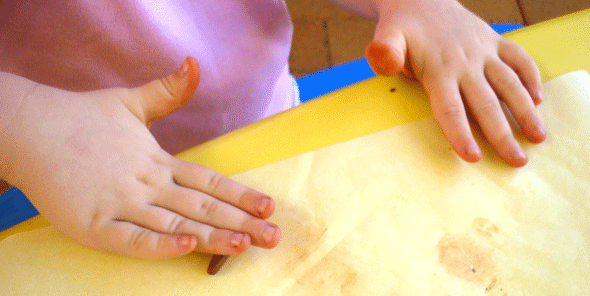
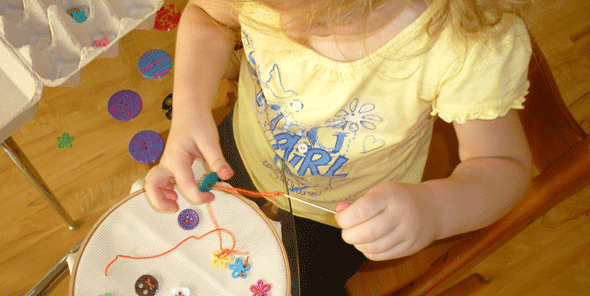
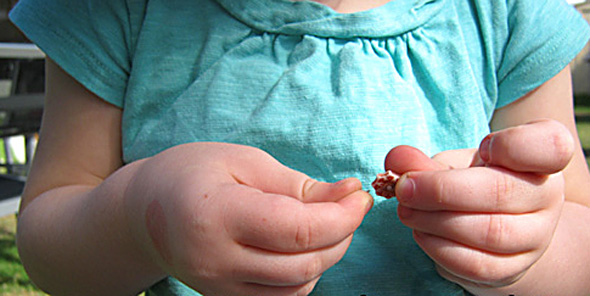
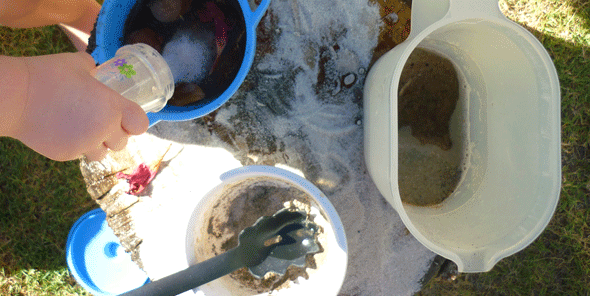
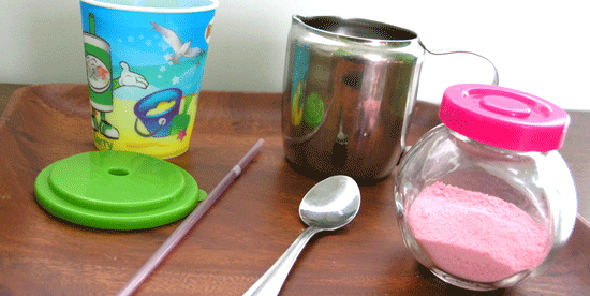
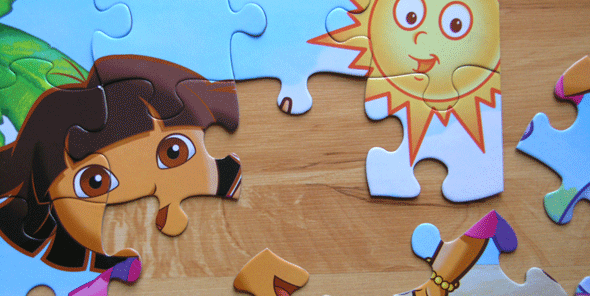
Really interesting. Hadn’t thought about how other activities could help strengthen fingers and improve writing ability before. Thanks for the insight x
These tips are gold, and I think they’re probably more important than ever.
Obviously I’ve been writing for years, but I do it less and less as I now prefer to use the computer. When I do write I find that my hands hurt so much more than they did when I was at school because I’m not using those muscles that I used to use when I wrote with pen/pencil regularly.
Children today have been born into a world of technology (unlike some of us who first encountered a computer in Year 9 at Keyboarding Class), so these skills are becoming as important as ever.
Great Post.
I have found children also enjoy using plastic tweezers and small tongs to move all sorts of objects such as beads, Lego, fruit pieces, etc which also provides good strengthening of the fine motor muscles:)
Thank you for the tweezer and tong suggestions, Jane.
Our OT told us to get a strawberry huller (they are small for his hand) and have him use them to pick up small colored pom pom and sort them in a cupcake tin. He loves doing this and we have added beans, popcorn kernals and other items to keep it interesting.
As per advice from our Occupational Therapist in my special needs classroom: all core strengthening activities help children to gain the posture and positioning needed to write. Also, writing on different surfaces give sensory input to the child and are helpful. (think of what it feels like to draw a piece of chalk across cement). Also writing on a vertical surface is great, though I cant remember exactly why. It uses different muscles and requires balance and core muscles for one….(easel, paper taped to a wall, door, or window, or drawing on the window with washable something) Another one I love to do is to write UNDER a table….if you have short child-size tables this is easier; tape paper to under side of table and have children draw laying on their backs or propped up on pillows, etc as needed.
I love the under the table idea, Trilby, that is one I haven’t tried. Thank you for sharing your experiences 🙂
You’re right, fine motor practice is so important. We play with play doh and sand constantly. I will have to try the threading buttons activity.
Unfortunatley, my just turned 3 year old son gets frustrated with fine motor work and so I’m thinking let him get good at one thing, like playdoh, to encourage his confidence? I’ll probably just ask him to see what he wants to do!
Hi Kristin, I think as with any skill development it is good to start with what your child is most interested in and find a way to build the practice opportunity around what they already love. I wrote a guest post over at Squigglemum last year about finding opportunities for fine motor development in all sorts of settings, maybe one of those would be of interest to your son? If you are interested, you can find the post here – http://squigglemum.com/kids/toddlers/15-places-to-find-fine-motor-fun/
All of those suggestions are great favourites in this house Christie! Next time my little one is pouring his own water (and spilling it all over the table) I’ll stand back and let him – knowing that it’s good for his development! We also like painting with lots of different sized and shaped ‘brushes’ – rollers, cotton buds, sticks, regular paint brushes, fingers, etc. The glue sticks get lots of use too.
I love all the ideas together here. My daughter use to love to cut paper. She called it carpet paper because it would get all over the carpet. I found a pair of scissors with no blade and it amazingly cut thicker paper. I also like cutting playdough. It is easier and fun. We also like to cut straws. You can check that out on my blog at http://educationalcreativity.blogspot.com/search/label/cutting
A splendid list of ideas. Also, don’t forget lots and lots of scribbling and doodling. This is something I enjoy with the young ones myself.
My eldest son needed some help in the fine motor skills area before he started school and what we did was rigged up his own clothes line (inside or out) and he used to peg the washing himself. Its one of those times where it wasn’t time to worry about how the clothes were being hung but encourage him to have a go. We also had our ‘vegie scissors’ which was a pair of childs scissors just for cooking. He used to help me by cutting the lettuce, the herbs and the mushrooms and anything else you can think of. Its important to get them to cut different thicknesses and textures of things, not just paper.
And it certainly worked, he now has no troubles doing any writing or fine motor work.
Thank you for sharing such great suggestions, Nelbe. I am so glad your son is doing well 🙂
I use styrofoam cubes and toothpicks. There are so many fun toothpicks out there. My girls love pushing and pulling them into and out of the styrofoam.
When we make banana chips in the dehydrator, I get out a child-safe knife and my daughter slices them into rounds. We also like to string beads a lot to make fun bracelets for friends.
Recently, she has really taken to learning to write her name and other words so this post was fun to read! We will definitely have to try some of those suggestions for strengthening her fingers and hands 🙂
I love this post! I tell people all the time that when I take my son out bike riding we are working on pre-writing. People try to correct me and tell me that it’s not a fine motor activity. BUT in order to ride a bike you have to hold the handlebars. For my son-who required finger seperations and does not have the middle finger joints-holding the handlebars is quite a workout for his grip strength. I recently found your website and I’m loving it!
Have read all the suggestions and I can see everyone seems to be on target. We use these techniques in the preschool where I am an assistant. The children think these are fun activities and don’t know the work they are really doing. Most parents don’t know how important these activities can be.
Love your site. Keep it up.
Thank you for the wonderful suggestions. Being at the “upper” end of the age spectrum, I’d forgotten how important fine motor skills are to writing. Since I’m one of the caregivers for my grandson I appreciate all these suggestions and reminders.
Hi.
Thanks for this, great suggestions 🙂 Your ideas are so resourceful & easy to organise.
I just did a similar post on pre-writing adventures on my blog. You cna check it our here at;
http://homeadventureswithmum.blogspot.com/2011/11/pre-writing-adventures.html
If your child is not ready for conventional scissors,there are starter scissors which are squeezed to cut and reopen automatically, making the cutting process achievable for younger children.
karrie dee
My little girl loves to “hide” things in playdough and “find” them. This is a great hand strengthening activity and a lot of fun. We take turns hiding and finding things like small rocks, coins, acorns, buttons etc. I have also let her peel the little “cutie” oranges from the time she was about 18 months old. It was a great challenge at first and I always had to start it out for her. Now, she’s 3 and doesn’t need any help at all!
we love making goop and hide small objects in it. We then use tweezers and/or tongs to grab them and then we can count them or sort them by color. Multi level learning, and the children don’t even know it. I like to color my goop with food colouring or coolaid (sensory). The objects can be seasonal ( spiders for Halloween or hearts for Valentine’s Day) or can be simple every day objects we find around the house such as buttons, paper clips, erasers, pencils, small toys , Lego figurines, etc….